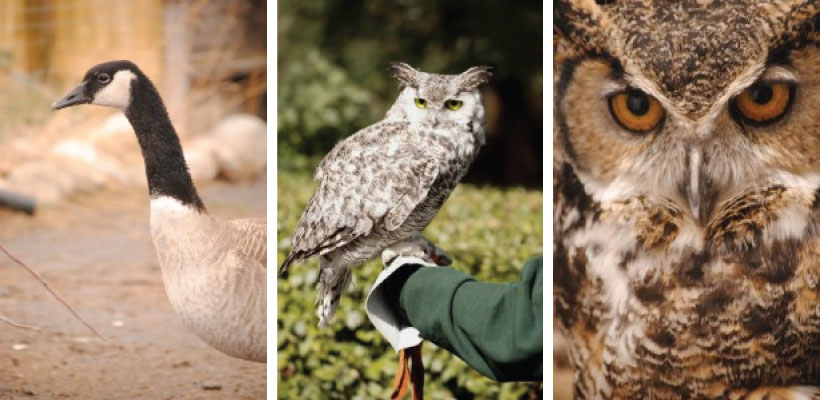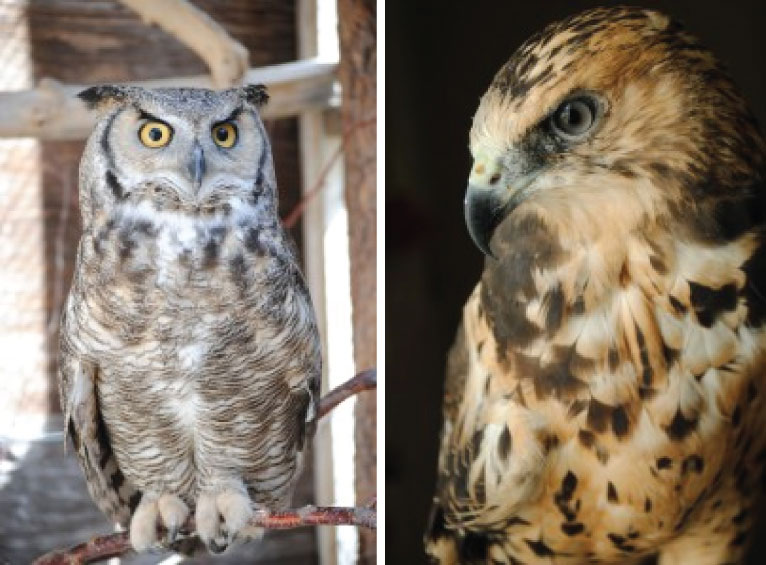Charity Spotlight: This post was provided by Andrea Hunt, Executive Director of the Calgary Wildlife Rehabilitation Society, as part of our ongoing charity spotlight series.

What if you were hit by a car and nobody stopped to help? It is a scary thought, but it is the reality for countless wild animals that are injured every day because of their contact with humans. Some are caught in barbed wire, electrocuted by power lines, poisoned, sometimes they strike windows, or get hit by a cars, with no one to help them recover. At the Calgary Wildlife Rehabilitation Society, we care. We believe that every life has value and we work to provide a second chance for these animals to live the wild life they were meant to live.
Our Story
Calgary Wildlife Rehabilitation Society (CWRS) was established in 1993 to provide professional care for wildlife rehabilitation. Each year we receive over 2,000 injured or orphaned wild animals and respond to thousands of wildlife-related calls from the public. In addition, CWRS provides motivational, skill-building experiences for volunteers and valuable outreach and education services to the community. Not only is CWRS a registered charity that does not receive any direct government funding, we are also the only wildlife hospital in the City of Calgary.
The need for wildlife rehabilitation is growing as cities expand and encroach on previous wild spaces. More and more wildlife find refuge and habitat within city parks, green spaces, and yards. This can present unique challenges for urbanites, and because of that, the CWRS also works as the only organization in Calgary that can provide answers to questions about living with wildlife, while providing appropriate care for wildlife that are found injured or orphaned.
Many of our patients are victims of their urban habitats and of conflict between human development and wildlife behaviour. Most of our patients are species that live within the urban environment including commonly seen animals such as Canada geese, White-tailed prairie hares, Eastern grey squirrels, Mallard ducks, Robins, Magpies, and Crows. It may surprise you to know that there are over 400 species of wild animals that live and thrive within the City of Calgary, and over the years, CWRS has cared for individuals from many of these species.
Teaching and Caring
We care for what we know. It is for this reason we actively engage the public in learning opportunities by participating in fairs and festivals, and by providing over 150 educational programs annually to schools and community groups. Our education program serves to inform the public about our services, emphasizing the value of wildlife rehabilitation, address conservation issues, provide information about native wildlife such as the physiology, adaptation, and migration of wildlife, and create conversation around the implications of human activities on the health and safety of wild animals.
Thousands of learners are inspired annually by our two educational ambassadors, Lito (Swainson’s Hawk), and Ophelia (Great Horned Owl) seen below. These two animals were brought to the center injured, and due to the severity of their injury, they could not be successfully released back into the wild. Our education programs work to create long lasting positive associations with wildlife, and it is our goal to provide relevant, engaging information and experiences for students and the community with regards to wildlife and wildlife issues.

Who is The More Dangerous Animal?
Humans pose a far greater threat to wildlife populations than they do to us. Most of the injuries that bring wildlife to CWRS are caused by human infrastructure or through well intentioned but injurious individual actions such as trying to keep wildlife as pets. Windows and roads are just two examples of human creations that wreak havoc for wildlife;millions of songbirds die every year in North America by hitting windows and cars injure or orphan wildlife every day. Many of these deaths are preventable and require only forethought, an understanding of animal behaviour, and a little ingenuity to drastically reduce the impact humans have on wildlife.
Living with wildlife means exercising patience while enjoying the wonder of the natural cycles of nature. For example, waiting a month or two for a litter of skunk kits to grow up and move out of your yard, keeping your dog on a leash while songbirds are fledging, or tolerating that Canada Goose who is nesting on your deck is all part of exercising patience and enjoying the wonder of nature. Wildlife enrich the lives of every Canadian and allowing animals to maintain their natural behaviours is a small price to pay for having the opportunity to observe the diverse species that call our cities home.
Patient Files: The Litter Skunk
This skunk came to us as a baby after being caught in a littered plastic ring. The plastic created a large wound that circled its body and three surgeries were required to close the wound followed by months of rehabilitation. He was a fighter though, and by the end of his time at CWRS, the staff were getting sprayed daily! Thankfully, this story had a happy ending, with this skunk released successfully on a large parcel of land outside of the city.

Every Life is Valuable
Healthy ecosystems benefit every life within them, including humans. The wildlife that inhabit our cities contribute to their vibrancy, beauty, and diverse wealth. They are worth rehabilitating and worth protecting, and every day, that is what we work to do.
To learn more about the Calgary Wildlife Rehabilitation Society, or to make a donation, please visit their Charity Profile Page >>
2 Responses to “Caring For Our Wild Neighbours”
Jack W. Cates
You guys are great , Jack W. Cates
•Yvette
You are all amazing. Thank you, on behalf of all wildlife, for the compassion you show and are committed to – for all that you do!
•